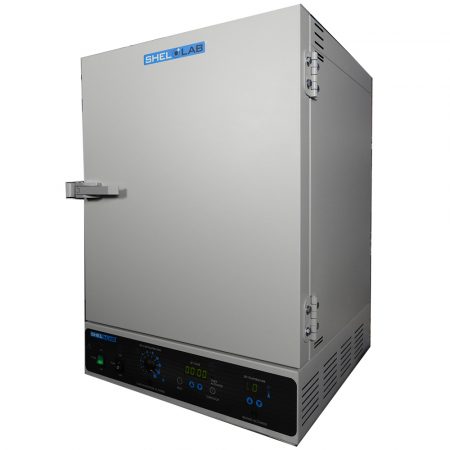Gravity convection ovens are a popular choice in various industries and laboratories for their unique heating mechanism and reliable performance. Designed to provide a consistent and uniform distribution of heat, these ovens utilize the natural process of convection to circulate heated air within the chamber. In this article, we will explore the pros and cons of gravity convection ovens, delving into their advantages, limitations, and how they compare to other oven types. We will also discuss the factors to consider when choosing a gravity convection oven and present a case study on Global Lab Supply’s gravity convection oven. Furthermore, maintenance and care tips will be provided to ensure the longevity and optimal functioning of these ovens. By the end of this article, you will have a comprehensive understanding of gravity convection ovens and be able to determine if they are the right choice for your specific needs.
Introduction to Gravity Convection Ovens
What is a Gravity Convection Oven?
Imagine a trusty oven that uses the power of gravity to do its cooking. No, it doesn’t magically float your cookies to perfection, but it does rely on the movement of air due to temperature differences. That’s what a gravity convection oven is all about.
How Does a Gravity Convection Oven Work?
In a gravity convection oven, hot air rises naturally because it’s lighter than cold air. This creates a gentle and consistent airflow throughout the oven’s chamber. The heat is transferred to the items being cooked through this convection process, ensuring even and uniform heating.
Common Applications of Gravity Convection Ovens
Gravity convection ovens are commonly used in various industries and laboratories for tasks like drying, baking, curing, and sterilizing. They are particularly useful for applications that require a gentle and uniform heating process without any forced air circulation.
Advantages of Gravity Convection Ovens
Even and Uniform Heating
When it comes to cooking or any other heat-related process, consistency is key. Gravity convection ovens excel at providing even and uniform heating throughout the chamber. Your goodies come out perfectly baked, with no hotspots or unevenly cooked sections.
Energy Efficiency
Who doesn’t love saving a few bucks on their energy bills? Gravity convection ovens are energy-efficient because they don’t rely on additional fans or blowers for air circulation. The natural convection process keeps the heat flowing without any extra power consumption.
Cost-effectiveness
Gravity convection ovens are generally more affordable than their mechanical or forced convection counterparts. With their simple yet effective design, they offer a cost-effective solution for many heating applications, making them a popular choice among budget-conscious consumers.
Limitations of Gravity Convection Ovens
Limited Temperature Control
One drawback of gravity convection ovens is their limited temperature control. Since they rely on the natural movement of air, maintaining precise and consistent temperatures can be challenging. If your application requires extremely precise heat management, a gravity convection oven might not be the best fit.
Slower Heating Times
Gravity convection ovens may take longer to reach the desired temperature compared to other oven types. The absence of forced air circulation means that it can take a bit more time for the heat to evenly distribute throughout the chamber. So, if time is of the essence in your cooking endeavors, you might want to consider other options.
Not Suitable for High Precision Applications
If your scientific experiments or culinary creations demand high precision and accuracy, a gravity convection oven may fall short. The relatively less controlled air circulation and limited temperature control may not meet the stringent requirements of certain applications. Precision-driven tasks might call for the use of more advanced oven types.
Comparing Gravity Convection Ovens to Other Oven Types
Gravity Convection Ovens vs. Forced Convection Ovens
While gravity convection ovens rely on natural air movements, forced convection ovens use fans or blowers to actively circulate air. This means forced convection ovens can achieve faster heating times and provide more precise temperature control. However, they are often pricier and may not be necessary for applications that don’t require intense air circulation.
Gravity Convection Ovens vs. Vacuum Ovens
Unlike gravity convection ovens, vacuum ovens operate under reduced atmospheric pressure. They excel at drying and heating sensitive materials without the risk of oxidation or damage. However, vacuum ovens tend to be more expensive, require specialized equipment, and may be overkill for simpler heating tasks.
Gravity Convection Ovens vs. Mechanical Convection Ovens
Mechanical convection ovens, like their forced convection counterparts, utilize fans to actively circulate air. This results in faster and more precise heating compared to gravity convection ovens. However, mechanical convection ovens are generally more expensive, consume more energy, and may not be necessary for applications that don’t require intense air movement.
So, if you’re looking for a straightforward, energy-efficient, and budget-friendly oven that provides even heating for a range of applications, a gravity convection oven might just be your perfect match!
Factors to Consider When Choosing a Gravity Convection Oven
When it comes to choosing the right gravity convection oven, there are a few key factors to consider. Let’s take a closer look at three important considerations.
Size and Capacity
First and foremost, you’ll want to think about the size and capacity of the oven. Are you planning to use it for small-scale experiments or larger production runs? Make sure to choose a size that suits your needs without compromising on space or efficiency. After all, you don’t want to end up with an oven that’s either too cramped or wastes valuable laboratory real estate.
Temperature Range and Control
Another factor to keep in mind is the temperature range and control offered by the oven. Different experiments and materials require specific temperature settings, so it’s crucial to choose an oven that can accommodate your requirements. Look for a model that offers precise temperature control and a wide range of settings to ensure that your experiments are conducted at optimal conditions.
Interior Design and Accessibility
The interior design and accessibility of the oven should not be overlooked. Consider the number of shelves and their adjustability to ensure that you can maximize the oven’s capacity. Additionally, think about how easy it is to access the interior for loading and unloading. A well-designed oven with convenient access can save you time and effort in the long run.
Case Study: Global Lab Supply’s Gravity Convection Oven
Curious about what Global Lab Supply has to offer? Let’s dive into a case study of their gravity convection oven.
Overview of Global Lab Supply’s Gravity Convection Oven
Global Lab Supply’s gravity convection oven is a top contender in the market. With a reputation for quality and reliability, it’s worth exploring what this oven has to offer.
Features and Specifications
This gravity convection oven boasts a wide temperature range from X to Y degrees Celsius, providing the flexibility needed for a range of experiments. The oven also features precise temperature control, allowing you to fine-tune the settings with ease. With its spacious interior and adjustable shelves, you can optimize the oven’s capacity to suit your needs.
Customer Reviews and Feedback
Don’t just take our word for it—let’s hear from real customers. Many users have praised Global Lab Supply’s gravity convection oven for its reliability and consistent temperature accuracy. Customers appreciate its user-friendly controls and the durability of the oven, ensuring that it’s built to last.
Maintenance and Care Tips for Gravity Convection Ovens
To keep your gravity convection oven in top shape, here are some important maintenance and care tips to follow.
Cleaning and Sanitization
Regular cleaning and sanitization are essential to prevent contamination and maintain optimal performance. Make sure to follow the manufacturer’s instructions for cleaning and use appropriate cleaning agents. A clean oven not only promotes accuracy in your experiments but also extends the lifespan of the appliance.
Regular Inspection and Calibration
Periodic inspections and calibration checks are crucial to ensure that your oven is functioning correctly. You don’t want to discover inaccuracies or malfunctions during important experiments. Consider establishing a schedule for inspections and calibrations, and always consult the manufacturer’s guidelines for best practices.
Troubleshooting Common Issues
Even with proper care, issues may arise. Familiarize yourself with common problems that can occur with gravity convection ovens and their troubleshooting solutions. Being equipped with this knowledge can save you time and frustration when faced with unexpected challenges.
Conclusion
In conclusion, a gravity convection oven can be a valuable asset for laboratories of all sizes. When selecting one, remember to consider factors like size, temperature range, and interior design. Global Lab Supply’s gravity convection oven, with its versatile features and positive customer feedback, is certainly worth considering. Lastly, prioritize proper maintenance and care to ensure the longevity and accuracy of your oven. With the right oven and a little TLC, you’ll be on your way to conducting experiments with ease and precision.



